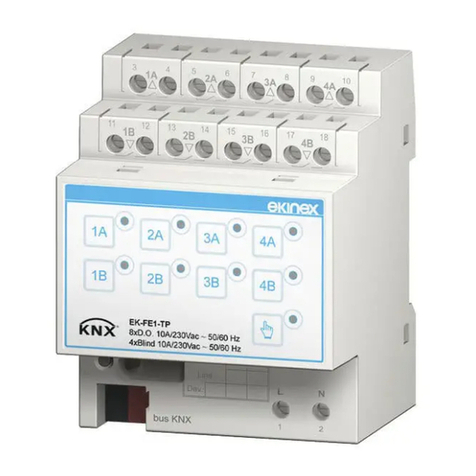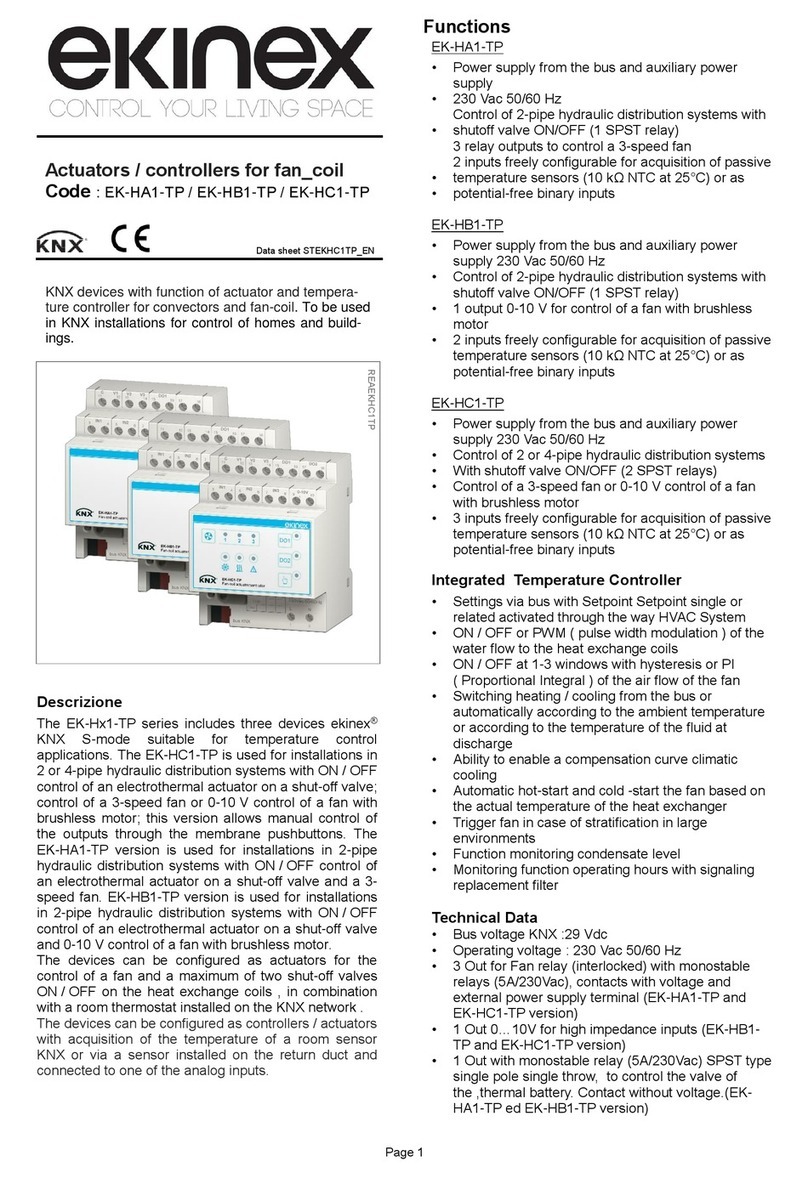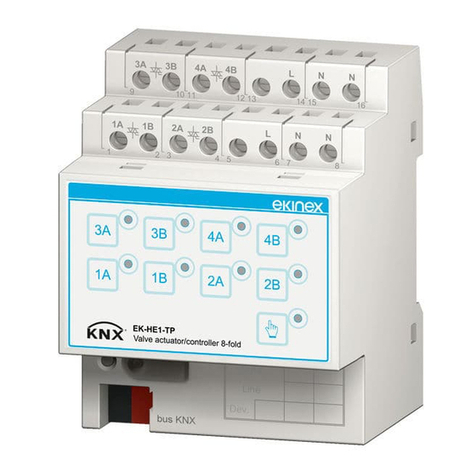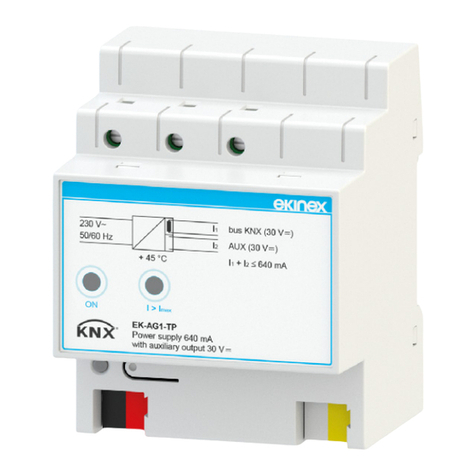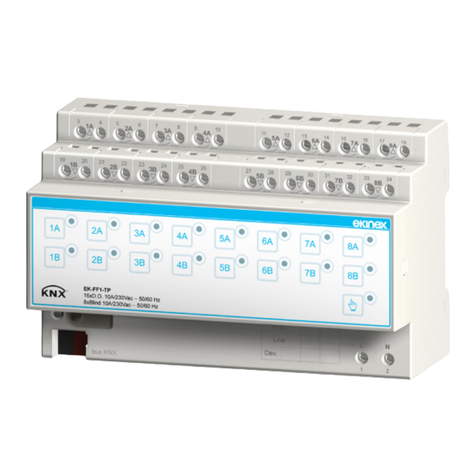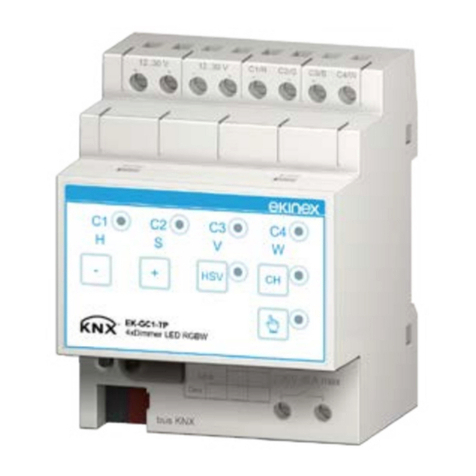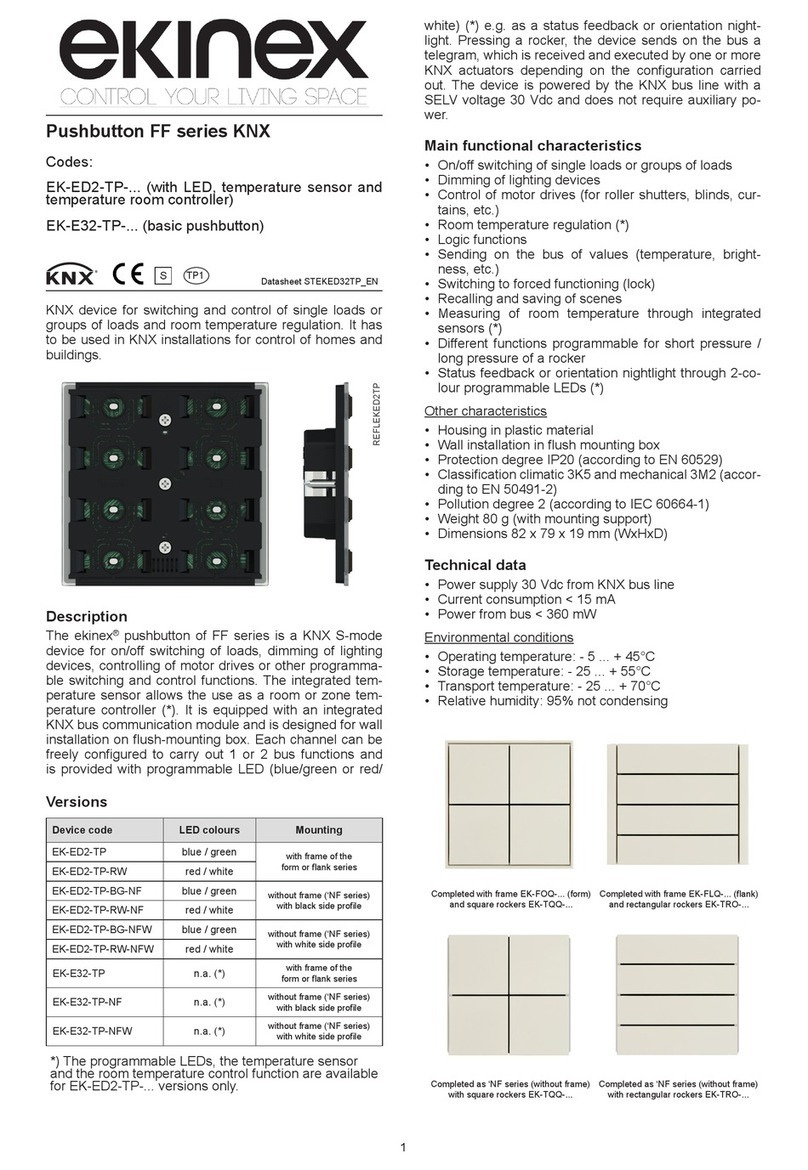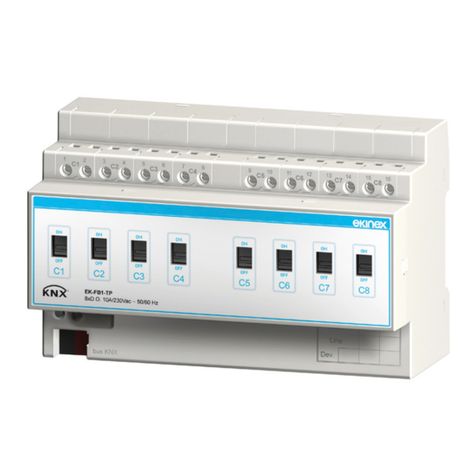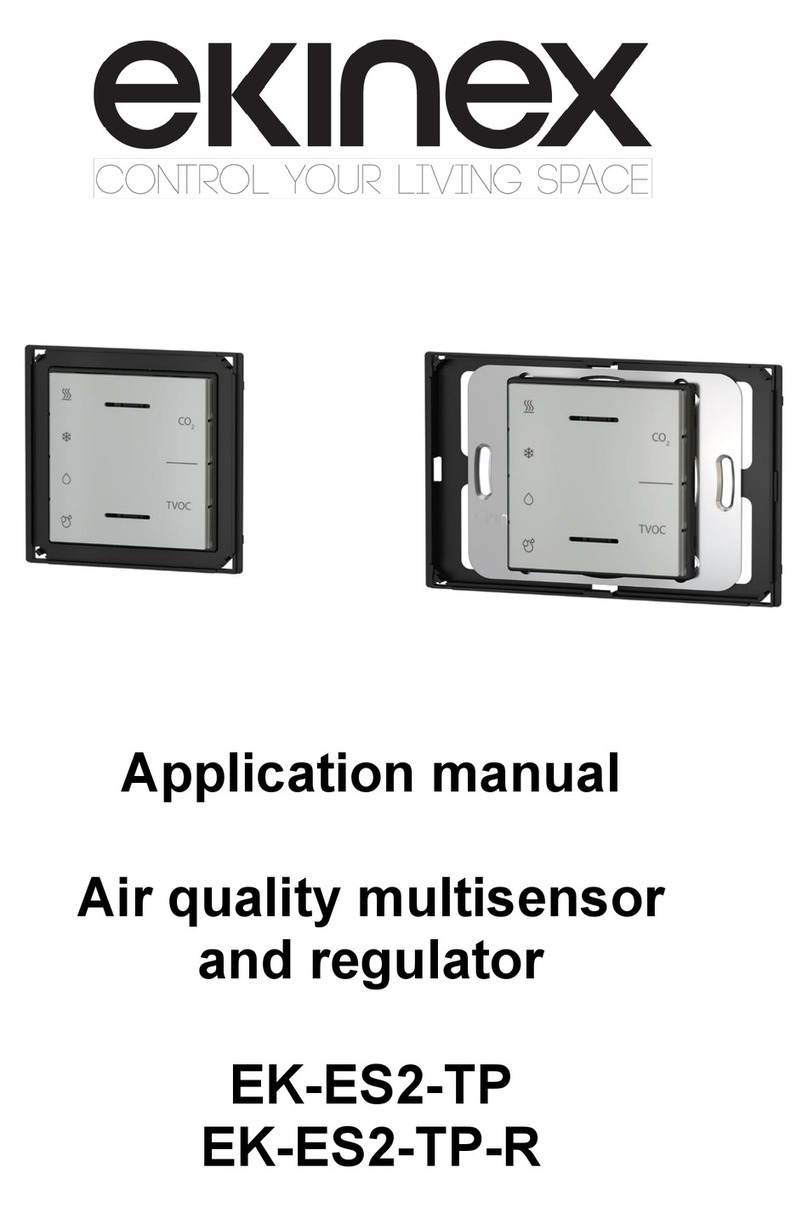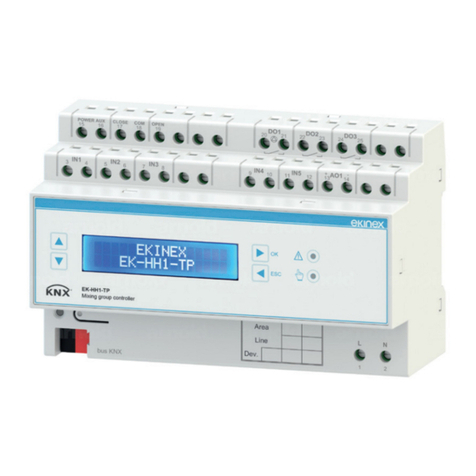Application Manual
EK-HH1-TP mixing group controller
Release 1.01 - Updating: 12/05/2018 Application Manual
© EKINEX S.p.A. – All rights reserved Pag. 2
Summary
1Scope of the document..................................................................................................................................5
2Product description ........................................................................................................................................6
2.1 General characteristics ..........................................................................................................................6
2.2 Electrical characteristics ........................................................................................................................8
3Switching, display and connection elements.................................................................................................9
4Configuration ............................................................................................................................................... 11
5Programming and commissioning ...............................................................................................................11
6Function description ....................................................................................................................................12
6.1 Switching on.........................................................................................................................................12
6.2 Offline operation...................................................................................................................................12
6.2.1 Operation with bus power only.....................................................................................................12
6.2.2 Operation with load power supply only ........................................................................................12
6.3 Manual operation .................................................................................................................................12
6.3.1 Output status when mode changes .............................................................................................12
6.3.2 Manual mode activation ...............................................................................................................13
6.4 Online operation...................................................................................................................................13
6.4.1 Software working cycle ................................................................................................................13
6.4.2 State variables (communication objects) .....................................................................................13
6.5 Applications..........................................................................................................................................13
6.6 Mixing group management ..................................................................................................................14
6.6.1 Components .................................................................................................................................14
6.6.2 Activation/deactivation sequence.................................................................................................14
6.6.3 Activation......................................................................................................................................14
6.6.4 Heating/cooling changeover.........................................................................................................15
6.6.5 Types of supported servomotors..................................................................................................15
6.6.6 PI (proportional-integral) regulator ...............................................................................................16
6.6.7 Circulator protection function .......................................................................................................16
6.6.8 Anticondensation protection function ...........................................................................................16
6.6.9 Alarms ..........................................................................................................................................17
6.7 Physical inputs .....................................................................................................................................20
6.8 Physical outputs...................................................................................................................................20
6.9 Control modes......................................................................................................................................21
6.9.1 Heating: fixed point ......................................................................................................................21
6.9.2 Heating: climatic compensation ...................................................................................................21
6.9.3 Heating: recalibration based on return temperature ....................................................................22
6.9.4 Heating: recalibration based on internal conditions .....................................................................23
6.9.5 Heating: climatic compensation and recalibration based on internal conditions .........................24
6.9.6 Heating: connecting communication objects of KNX sensors .....................................................25
6.9.7 Cooling: fixed point.......................................................................................................................27
6.9.8 Cooling: climatic compensation....................................................................................................27
6.9.9 Cooling: recalibration based on internal thermohygrometric conditions ......................................28
6.9.10 Cooling: clim. Comp. and recalibration based on internal thermohygrometric conditions ...........28
6.9.11 Cooling: connecting communication objects of KNX sensors......................................................29
7Display .........................................................................................................................................................32
7.1 Navigation buttons ...............................................................................................................................32
